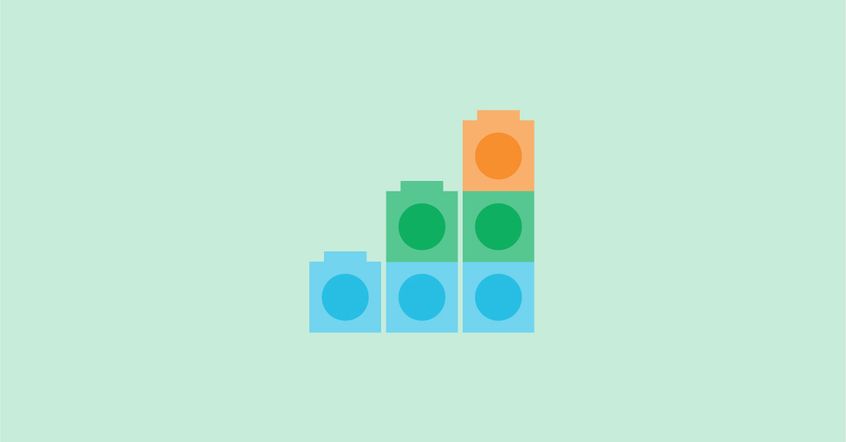Understanding how children construct knowledge to support their development
Editor’s Note:
This is an updated version of a blog post published on June 26, 2018.
Children learn new things by building on what they already know. Understanding how your learners construct knowledge is the key to supporting their development.
“Why do you have earrings on your teeth?” asked my friend’s three and a half year old when he saw my son’s new braces.
It’s an odd question. That is, until you realise he had never come across shiny silver things on teeth before, just on ears, so he used what he already knew and applied it to this new situation.
After some explanation, we helped him understand what these “teeth earrings” were. This new knowledge developed his learning and understanding.
Jean Piaget: a pioneer of cognitive development in children
Jean Piaget was a pioneering psychologist whose child development research became widely known from the 1960s. His work describes how children begin to actively build their understanding of the world through what he called schemas, or building blocks of how things work.
Piaget identified how these building blocks are continually being revised and elaborated upon every time a child encounters new experiences through two processes which he called ‘assimilation’ and ‘accommodation’.
Why assimilation and accommodation come before understanding
Usually, when children experience new ideas, events or information that fit with their current understanding, they add it to what they already know. This is called assimilation.
But there’s more. When children come across new ideas that bump up against their prior knowledge, they have to accommodate these ideas by modifying existing schema or forming a completely new one.
For example, a learner might understand multiplication by ten as adding a zero: 24 × 10 = 240. This method works for whole numbers, but what about when they learn about decimals? Assimilating their knowledge leads to a misconception: 2.4 × 10 = 2.40 so a learner will have to adjust their thinking.
Landing between assimilation and accommodation can be an uncomfortable place. Children may experience a sense of ‘disequilibrium’ — unsure of where to place this new knowledge or how to use it.
How to help children understand new ideas in the classroom
Remember when Pluto stopped being a planet? Think of those moments when you realise that new information has rendered what you thought you knew to be wrong. How did you adjust your thinking to incorporate these discoveries? Imagine how a learner in your maths classroom might struggle with a similar situation.
So, what can you do to aid children’s learning so that their understanding of a new concept becomes fixed in their mind?
- Reflect through journaling: Assimilation and accommodation happen throughout the school day, so it’s important to give learners time to reflect and adjust their thinking. Journaling is an effective way to provide that thinking time.
- Encourage meta-learning: Opportunities to learn about their learning (known as meta-learning) helps children process their maths learning and express their thinking.
- Build in collaboration time: Working in pairs or small groups lets learners hear each other’s ideas and modify their own in a natural, social setting. This is an active process of making meaning known as constructivism. Learners constantly reconstruct ideas as their levels of understanding develop.
It was Piaget who first identified the active nature of learning — children construct knowledge rather than just receiving or storing it. Sometimes children will generalise one schema and apply to other areas — which is what happened when my son’s braces were seen as earrings.
Can you think of any examples of mistaken generalisation from your class recently?
My own experience: when a teacher’s schema needs adjusting
A while ago, I taught a class with a high proportion of ESL students and became concerned that one learner was falling behind. I suspected that she had some special educational needs, so I arranged for some diagnostic testing.
Much to my surprise, I discovered that she experienced a learning delay because she was engaging with three languages at once (her mother tongue, the language of the country in which she was living and immersion in the third language at school). She didn’t have any special needs.
This was a useful lesson for me as I accommodated information I had not previously appreciated. My schema was adjusted accordingly.
Over the next week, see if you notice those moments of disequilibrium in your own engagement with the world. Reflect on the dissonance of that moment and think about what new information or experiences you need to incorporate, to adapt your schemas.
Then try to spot those moments with your learners as they wrestle with new concepts. Hopefully, you will witness that great ‘aha!’ moment for yourself. Feel encouraged that all sorts of active cognitive development are going on in your class.
